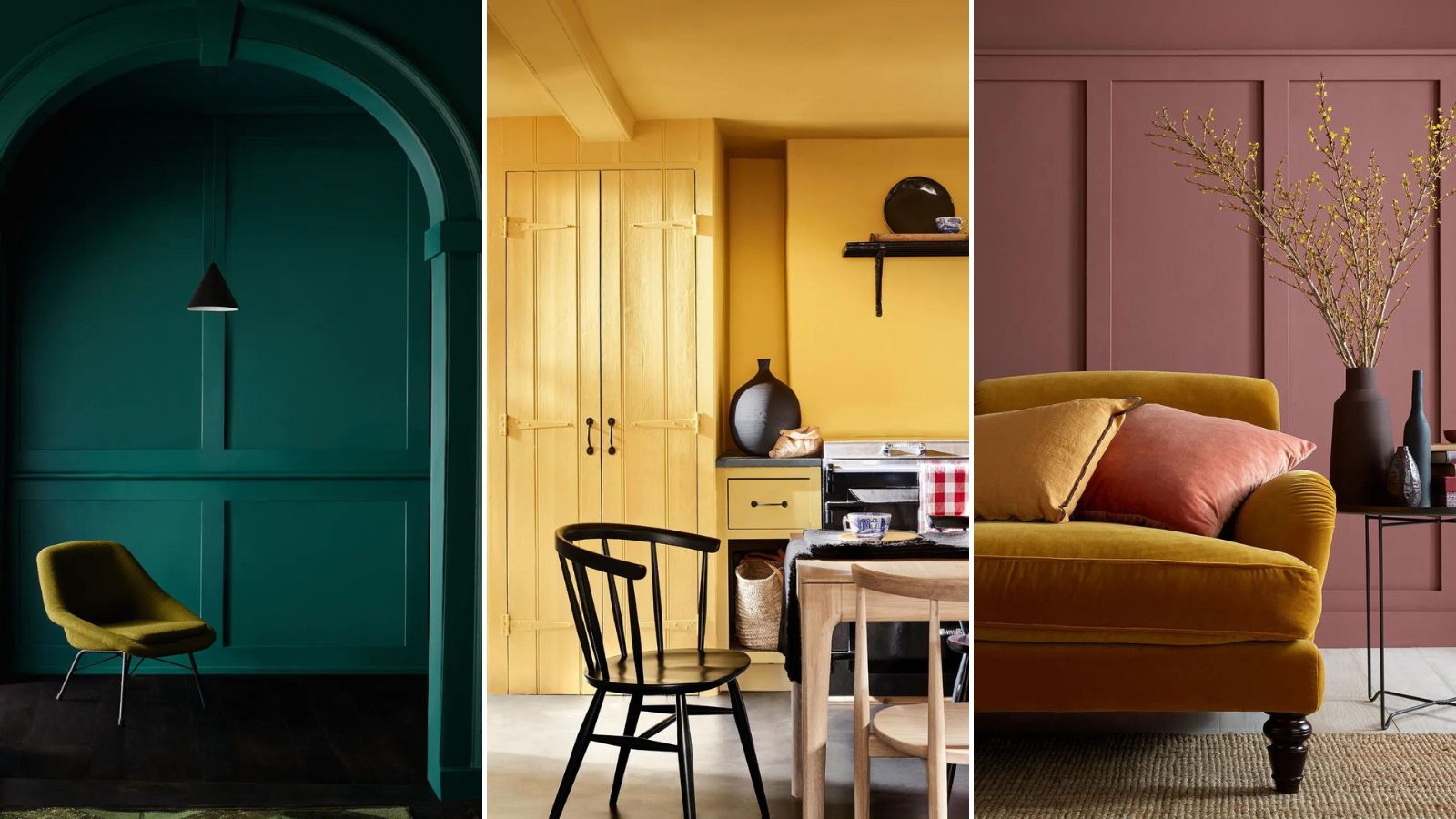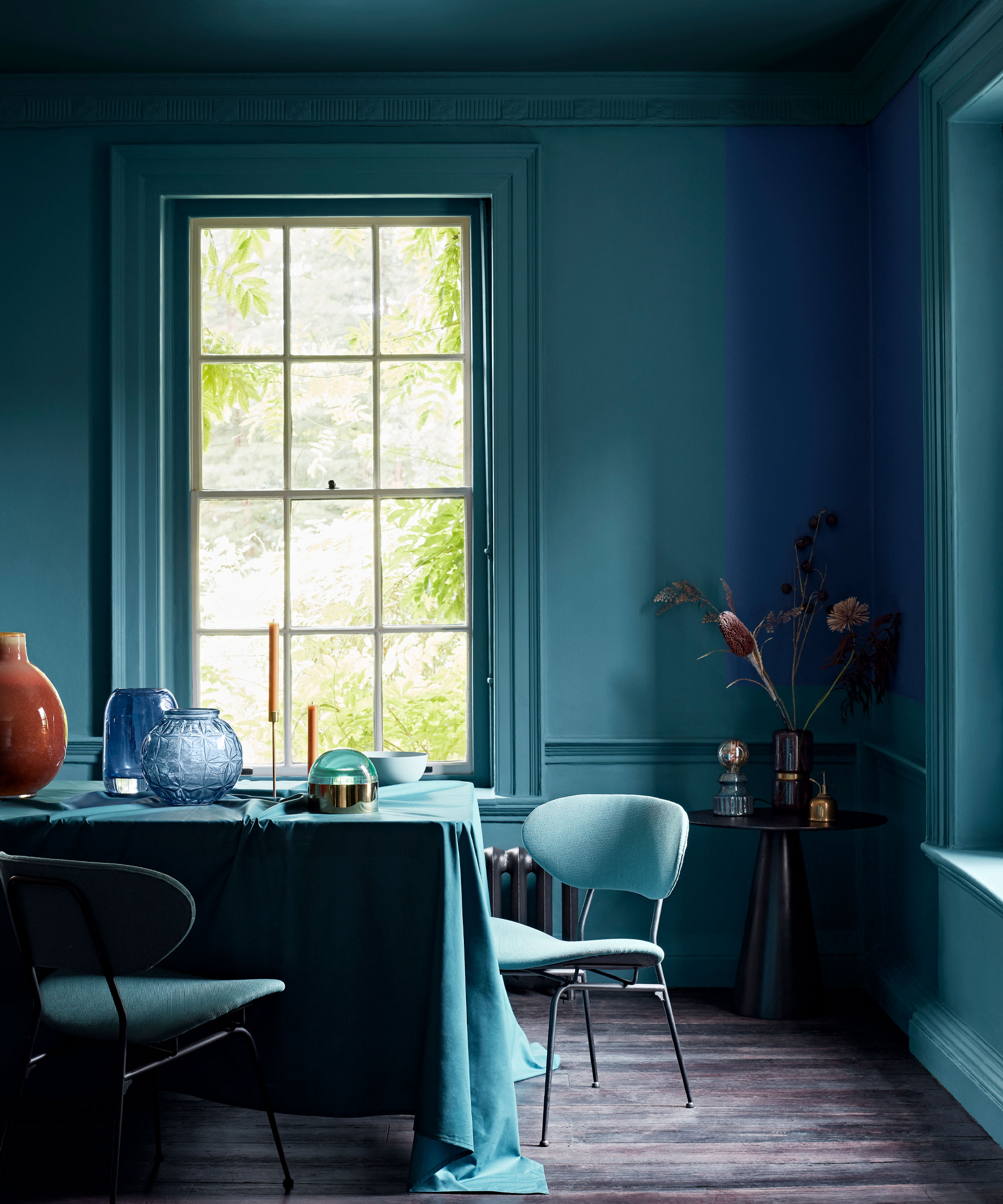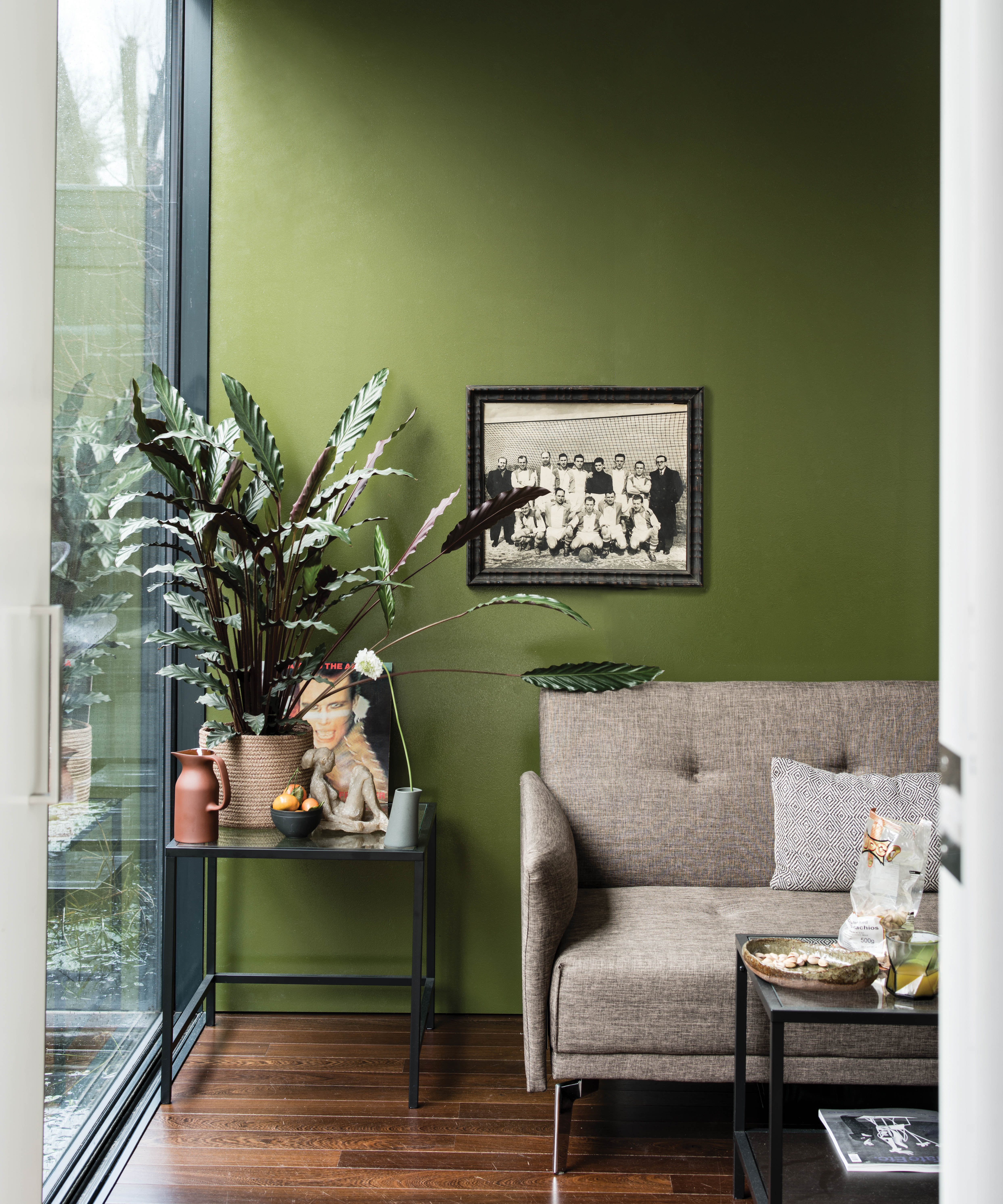How to fix chipped paint on interior walls – advice from expert painters
Chipped paint on a wall? Don't fret – this is how to fix it yourself, according to experts


Chipped paint on walls is nearly inevitable in most homes. At some point, however perfect the paintwork was initially, a chip or two will appear. Whether from moving furniture around a room during a layout change, kids and/or pets playing, or even a water leak behind a wall, a chip (or two) will sooner or later be on your list of things around the house to fix.
Fortunately, you can fix chipped paint yourself. It will take a little time and patience, but you can do it even without extensive DIY experience. Just resist the temptation to simply paint your walls over the chipped areas (more on that below).
Instead, follow this step-by-step process recommended by painting professionals.
How to fix chipped paint on walls
Brandon Walker, Superintendent at ASAP Restoration LLC, has over 20 years of experience in the painting industry. He is categorical about the one method for fixing chipped paint on walls that actually works: ‘The only way to fix truly chipped paint is to skim coat it with spackling compound and then sand it down to the level of the paint that isn’t chipped.’
Achieving an even surface is crucial because ‘this will create a thin uniform layer across the entire wall that seamlessly levels off the chipped sections and the existing paint.’’ Once you’ve achieved that, you can begin repainting. Here’s what you need to do step by step:

1. Do a visual inspection
You need to know what you're dealing with, so the most obvious first step is to check your walls for visual signs of chips and cracks. Brandon cautions that 'where there is one, there will be more', so you'll need to be thorough in your inspection.
Chips are easier to spot when whatever is beneath our current paint (old paint, plaster, etc.) is a different color from what you currently have on your wall; if the wall has been painted over with the same color multiple times, you may need to do a tactile inspection too.
2. Decide if it's worth repairing or repainting
The good news is that most chips can be fixed by being filled with a spackling compound. However, if there are multiple chips in several places, you might better off repainting the entire wall. Signs it's time to repaint a wall include not just chips and cracks but also faded or peeling paint, stains that won't come off, and even your own change in color preference.
Note that if you do decide to go down the repair route, you will need the exact paint you used originally; otherwise, the result will be patchy and you will probably end up having to repaint the entire wall anyway. You can try to match paint to your existing paint, but you very likely won't get an exact match.
3. Fill the chip with spackling compound
All you need here is a spackling compound (widely available on Amazon and in hardware stores) and a putty knife. Brush off the dust or debris in and around the chip; then, 'level off the compound so that it is uniform with the rest of the paint on the wall,' says Brandon.
You'll need to work fast here: 'Use the putty knife to make slight adjustments and get the excess compound off of the wall while it is still pliable.' As Brandon explains, 'this makes it easier to sand later on.'
If you are a complete DIY novice, you may benefit from buying a Drywall Patch Repair Kit from Amazon. The kit includes plastic scrapers that are very easy to use for leveling off the spackling.
Top tip: Wait for the compound to dry completely before proceeding to the next step

Get your hands on a putty knife to seamlessly spackle over chips in your painted walls.
4. Sand
For this step, you will need sandpaper, a sanding block, or a sanding sponge. Our favorite is a Drywall Sanding Sponge, from Walmart. It's easy to hold, and it has the right grit for an interior wall. Always go for fine-medium grit, as coarse grit could damage your paintwork further.
The purpose of sanding is obvious: to ensure that the new filled-in layer is level with the existing wall. Work slowly and methodically. When you are done sanding, Brandon recommends performing a tactile inspection of your work: 'You will be able to see and feel any of the defects in the chipped sections to determine if you need to do any more patching work.'

Brandon Walker has been in the painting and construction industry for more than 20 years. After running his own company, he decided to advance his skills as a Superintendent with ASAP Restoration. Brandon cut his teeth as a teenage painter working for Walker Paint Masters doing commercial projects for Planet Hollywood and Elizabeth Arden’s Red Door Spa among others.
5. Apply primer
Once you are satisfied with the quality of your filling and sanding, you can proceed to prime the spot you're about to repaint. Don't be tempted to skip this step and go straight in for the painting. Primers help the background paint and the new paint bind together better. We've put together a helpful guide to how many coats of primer you need to make this process easier.
6. Paint
Finally, you are ready to paint over the once-chipped area. What you use to paint will depend entirely on the surface area. A tiny chip will likely require a fine painter's brush; a larger area will need a paint roller or spray gun. If you have the original tool you used to paint that same wall, your paint touch-up is more likely to be seamless.
Whichever tool you use, go easy on the paint. It's easier to spread a little paint out and use more if needed, but difficult to remove excess paint, especially if you end up overloading a small area.

FAQs
Can I just paint over a chip in a wall?
This is a question you may be asking if you're not that keen on DIY, or if you're simply wondering if the whole process is worth the hassle.
So, can you just repaint a chip in a wall? Brandon's answer is: ''You can, but you will always notice the chipped section.'' This might not be a huge issue ''if the chip is small enough,'' but in the majority of cases, you will need to fill in the chip before repainting.
Chuck Reger, painting expert at Five Star Painting, also strongly advises against painting over chips in walls: 'While it might seem easier just to apply a coat of paint, this will result in a more noticeable, uneven surface. It takes some prep work with cleaning, sanding, and spackling, but these steps are essential in fixing a paint chip to ensure a smooth and seamless finish!'
Another option, of course, is to wait until you're ready for a complete room refresh and either fix and repaint all the walls or hire a professional painter to do the job for you.
How do I fixed chips in textured walls?
The process for textured walls will be similar to the steps outlined above, but according to Chuck Reger, 'walls with texture require adding new texture over the spackle prior to painting.' Don't worry, you can still do it yourself. Chuck explains that 'most small repairs can be textured to match using a rattle can of Homex texture.'
Homex texture comes in a can from Amazon and is easy to apply yourself before repainting the affected area.
Can I use wood putty instead of spackle?
There are all sorts of products on the market, some of them advertized as universal products for wood, drywall, etc. We recommend avoiding those and sticking with spackle. Spackle is gypsum-based, which makes it highly suitable for indoor walls. It's also easier to spread and easy to sand once dried.
Wood putty, on the other hand, can be anything from glue-based to epoxy-based and is really best used on chips or scratches in wood. It is sometimes used on exterior wall chips, but it tends to have a tougher finish that's more difficult to sand.
Sometimes, a wall needs more than a simple patch-up. In these cases, it might be worth exploring a variety of paint ideas to find a color that perfectly matches your interior space.
Sign up to the Homes & Gardens newsletter
Design expertise in your inbox – from inspiring decorating ideas and beautiful celebrity homes to practical gardening advice and shopping round-ups.

Anna is a professional writer and academic. She taught English Literature for several years before joining Future where she wrote for Real Homes, Homes & Gardens and Livingetc for four years. She is a regular contributor for Parade Home, BiggerPockets, and many other publications. In her spare time, Anna enjoys hiking and gardening.
-
 Ina Garten's storage pantry is an insightful window into all of the best cookware used by the chef – and it's easy to recreate on your kitchen shelves from $48
Ina Garten's storage pantry is an insightful window into all of the best cookware used by the chef – and it's easy to recreate on your kitchen shelves from $48The beautiful dishware in The Barefoot Contessa's Hamptons pantry showcases the tools she uses most often to cook – this is exactly how you replicate it
By Sophie Edwards Published
-
 Extend the lifespan of your appliance with 5 simple but crucial washing machine maintenance tips
Extend the lifespan of your appliance with 5 simple but crucial washing machine maintenance tipsFrom cleaning the filters to keeping the door open, experts reveal the washer tips they swear by
By Andy van Terheyden Published